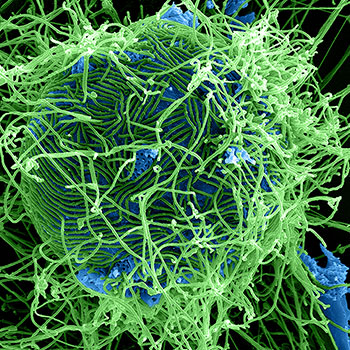Why is western blot used to confirm elisa?
1 Answer
Typically this is an antibody specificity test.
Explanation:
In an ELISA it is very difficult to tell whether or not your antibody is binding to your protein of interest, a completely different protein, or a range of proteins.
The Western blot will be used to check the specificity of the antibody (you should note that the Western blot may not detect all cross-reactions with incorrect proteins).
In the Western blot, you can see the size of the protein to which the antibody is binding (you can't in an ELISA). Therefore, for example, if your antibody should be binding to a protein of 56 kDa and you see a band at ~56 kDa on the blot then you can be reasonably confident that the antibody is binding to the correct protein.
If, on the other hand, you saw a band at 32 kDa you could conclude that the antibody is binding to the wrong protein. Likewise, if many bands showed up on the Western blot then that would suggest (in the absence of protein degradation) that the antibody was binding to a range of different proteins.
In the example of the 32 kDa band appearing on the gel, and also the multiple bands, it would suggest that the antibody lacks specificity for the ELISA and that any results seen in the ELISA May not be specific to the protein of interest.
If I was run this sort of test I may include some sort of "interfering" reagent to test the antibody. For example, if I had raised my antibody to a peptide I may include the peptide in the primary antibody solution to test for correct binding. That is, in the presence of the peptide I should see no band or no result from the ELISA as my primary antibody would be unable to bind due to the presence of an excess of the peptide.

